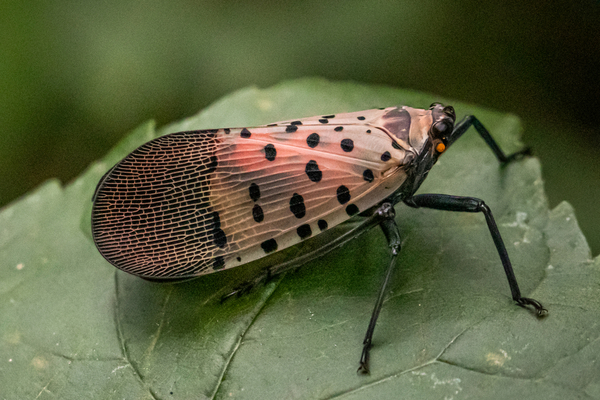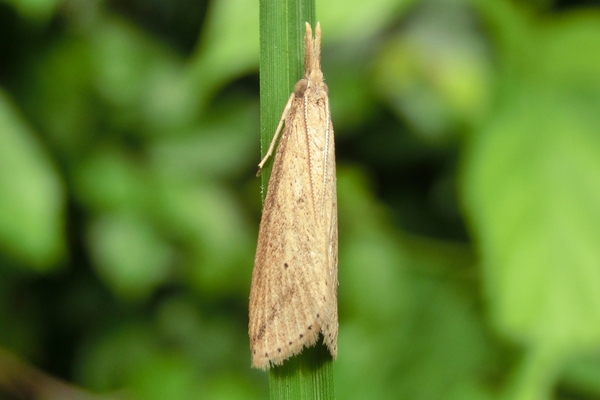There are many types of crop diseases and insect pests with far-reaching impacts, and they often break out in the form of disasters, causing devastating damage to crops and causing significant economic losses. Common crop pests include Spodoptera Frugiperda, migratory locusts, meadow borers, armyworms, rice planthoppers, rice leaf rollers, stem borers, etc., which have a serious impact on the growth and development of crops. These pests are highly harmful and are of great concern in agricultural production.

Spotted Lanternfly
Among them, pests such as Spodoptera Frugiperda, migratory locusts, meadow borers, armyworms, rice planthoppers, rice leaf rollers, and stem borers are the objects that farmers need to pay attention to and prevent at all times. These pests can cause varying degrees of damage to crops, and effective control measures need to be taken to ensure the healthy growth and harvest of crops.
1. Spodoptera Frugiperda (can eat/fly/produce/resistant to pesticides)

Spodoptera Frugiperda has long been ranked among the top ten agricultural pests and is listed as one of the world's important agricultural pests by the Food and Agriculture Organization of the United Nations. Known for its nickname of "army bug," this pest possesses several terrifying properties: the ability to both eat and fly, reproduce rapidly, and be resistant to drugs. They can migrate 100 to 500 kilometers every night with the air currents, and can even fly as far as 1,500 kilometers; they can survive and reproduce at temperatures of 11°C to 30°C; and they can feed on more than 80 kinds of plants, which mainly harm corn. , sugarcane, sorghum and other crops.

Since it first invaded Africa in 2016, Spodoptera Frugiperda has rapidly spread to 44 African countries in just two years, causing direct economic losses of approximately US$6 billion to the region. After entering China, Spodoptera Frugiperda has been raging everywhere in the country. Its rapid migration and spread, wide range of damage, and difficulty in subsequent prevention and control can be described as an unprecedented serious situation in recent years.
2. Migratory locusts (wide distribution/great harm/rapid reproduction)

One of the most famous crop pests is the migratory locust, which is one of the most widespread and most harmful crop pests in the world. Migratory locusts often bloom in large numbers during droughts and can migrate long distances. Although migratory locusts are usually solitary and do relatively limited damage, they sometimes change their living habits and prefer to live in groups. When large numbers of migratory locusts gather and migrate en masse, a terrifying locust plague occurs. Once a locust plague occurs, swarms of locusts will devour farmland crops, causing devastating damage to agricultural products, causing serious economic losses, and even triggering famine due to food shortages.
3. Grasshopper (concentrated hazard/strong outbreak/rapid spread)

The meadow borer is one of the top ten famous crop pests in my country, and its suddenness is extremely strong. This pest has strong migration ability and is prone to concentrated damage, showing characteristics such as strong outbreak and rapid spread. It is mainly distributed in the Northeast, Northwest and North China regions, showing a pattern of periodic outbreaks every 10 to 13 years. The meadow borer has a wide range of damage. According to statistics, it can harm more than 200 species of plants in 35 families, among which it has a greater impact on crops such as corn, peas, soybeans, sorghum, potatoes, and melons. The harmful symptoms of meadow borer are closely related to the age of the insect. Especially the 4th to 5th instar larvae are in the binge eating stage. They can quickly eat up the entire crop leaves, which can lead to serious yield reductions in a short time.
4. Armyworm (gregarious/migratory/omnivorous/gluttonous)

Among crop pests, armyworms are one of the most terrifying representatives. As a polyphagous pest, they attack a wide range of plants. According to statistics, they can feed on more than 100 kinds of plants. They are especially fond of attacking gramineous plants, such as wheat, rice, millet, corn, sorghum, millet, and sugar cane. And reed etc. The larvae like to feed on leaves. When the disease is serious, they can eat all the leaves, leaving only the bare stalks. What's even more terrifying is that they can bite off the extracted wheat ears, causing serious reduction in crop yields and even leading to harvest failure.
The horror of armyworms lies in their swarming, migratory, omnivorous and gluttonous nature. These characteristics make them national agricultural pests. Once they break out, their damage to crops can be described as devastating.
5. Rice planthopper (covert/outbreak/spreading virus)

Rice planthoppers are one of the most harmful species to rice in the list of crop diseases and insect pests in my country. They are parasitic pests that live on rice stems. They mainly suck rice juice, causing rice plants to appear yellow leaves or even withered plants. Damage at the ear stage will affect During heading and grain filling, empty grains and deflated grains appear. Because the rice plants are densely packed and covered by rice leaves, the early symptoms of damage are not noticed by people. When the rice plants are severely damaged, the leaves turn yellow and the rice plants fall into groups and appear like a fire, the symptoms of damage are clearly displayed. However, the damage has already been caused. Irreparable losses are concealed, explosive and destructive, and can result in reduced production or even no harvest.
6. Rice leaf roller (migratory/fast reproduction/strong drug resistance)

Rice planthopper is one of the most harmful pests to rice among crop diseases and insect pests in China. This pest is parasitic on rice stems and mainly sucks the sap of rice plants, causing leaves to turn yellow or even wither. In severe cases, it may lead to death. If damaged during the rice ear stage, it will affect the rice heading and grain filling processes, causing problems such as empty grains and deflated grains.

The damage caused by rice planthoppers is often due to the dense growth of rice plants and lush leaves, so the initial symptoms are not easy to detect. Only when the leaves become withered and yellow, and the rice plants fall into clusters and appear burning, can people clearly observe the symptoms of damage. At this time, irreparable losses have often been caused. Rice planthoppers have the characteristics of concealment, outbreak and destructiveness, which can lead to reduced rice yield or even no harvest.
7. Borer borer (poor food habits/many places for overwintering/hazards of changing strains)

Among crop diseases and insect pests, stem borer is an important borer pest that mainly harms rice and other grass crops. This pest is widely distributed in many countries in Asia and Europe, and is considered one of the most serious common pests that harm rice in our country. In addition to causing harm to rice, the borer also attacks crops such as wild rice, corn, sorghum, millet, and sugar cane, as well as wild plants such as wild rice, barnyardgrass, Imperata, reeds, and Vitex trigonatum. The larvae of this pest can also transfer to wheat, corn, rape, broad beans and other crops during the immature period in winter to cause damage. Under normal circumstances, stem borer will reduce crop yield by 3% to 5%, and in severe cases it may even reduce yield by more than 30%.
8. Wheat aphids (spread virus/parthenogenesis)

Wheat aphids are one of the most troublesome pests for pasta lovers and are the number one most destructive pest to wheat growth. This pest lives by sucking the sap from wheat stems, leaves and young ears as adults and nymphs, causing serious damage to wheat. At different stages of wheat growth, its harmful effects are also different: at the seedling stage, damage can cause leaves to turn yellow, affecting normal growth, and even lead to withering and death; from jointing to booting stages, damage affects the normal heading process; In the later stage, small yellow spots appear on the affected parts, the wheat leaves gradually turn yellow, and the wheat grains cannot be enriched. In severe cases, the wheat ears dry up and cannot bear fruit, or even the whole wheat plant dies. What’s even more frightening is that wheat aphids can also spread viruses and cause diseases, leading to severe yield losses.
Moreover, when wheat aphids have no overwintering period in the south, they will lay eggs through parthenogenesis all year round, making their numbers more difficult to control and causing great trouble to wheat cultivation.
9. Asian corn borer (mixed diet/complex occurrence pattern/few natural enemies)

The Asian corn borer is widely distributed in corn-producing areas, especially in Heilongjiang, Liaoning, Jilin, Inner Mongolia and other provinces, and its damage is quite serious. North China, Huanghuai, Southwest and other regions are also often affected by it. The larvae of this pest usually hide in corn heart leaves, undrawn tassels, and axillary buds. Once the heart leaves are damaged, neat holes will be left on the newly grown leaves.

As the larvae grow, they will bore into the stems and ears, causing problems such as stem breakage and ear breakage, seriously affecting the pollination of corn and the transportation of water and nutrients. In addition, the Asian corn borer has a wide range of feeding habits and is not limited to corn. It can also harm many crops such as sorghum, millet, potato, sunflower, hemp, broad beans, and kidney beans.
10. Vegetable thrips (Wide range of damage/strong concealment/fast reproduction/easy to develop resistance)

One of the common crop pests is vegetable thrips, a group of insects that feed on plant sap. Thrips not only use their razor-sucking mouthparts to damage tender tissues such as new shoots, new leaves, buds, tender stems, flowers and young fruits of plants, but they can also spread plant viruses, causing leaf spots to shrink, petals to mottle, Problems such as fruit deformation lead to reduced vegetable yield and quality.

Thrips cause a wide range of damage, and they are active day and night among open-field crops and greenhouse crops. Especially when the flowering period is in full bloom, thrips are more likely to attack flowers, causing the damaged flowers to fall off prematurely, or causing fruit deformity, affecting the fruit setting rate. Once entering the high-incidence period, the difficulty of controlling thrips gradually increases. Therefore, farmers should closely observe their crops and take timely control measures once the presence of thrips is discovered to avoid worsening losses.
Other common Crop diseases and insect pests:
Wheat aphid, wheat spider mite, melon thrips, African mole cricket, pea miner, citrus fruit fly, Spodoptera litura, small cutworm, red round scale insect, spider mite, peach aphid, cotton red boll, rice Moths, whitefly, star beetle, brown planthopper, cabbage butterfly, inchworm, mud bug, leafhopper, psyllid, green bug, scale insect, white butterfly, etc...

animal tags: pests
We created this article in conjunction with AI technology, then made sure it was fact-checked and edited by a Animals Top editor.